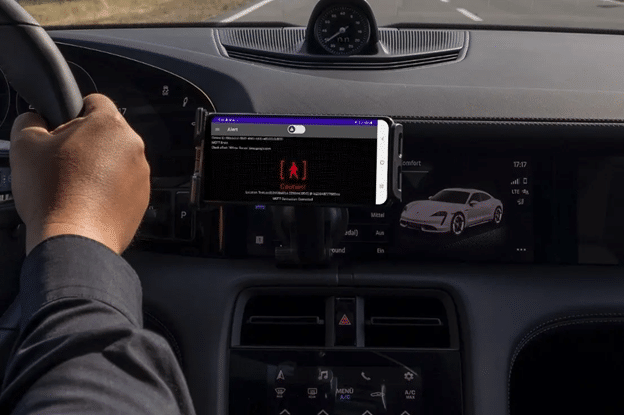Vodafone, Porsche team for 5G, edge-based real-time road hazard warning system

Porsche, mobile operator Vodafone and mapping company HERE technologies are running a project at Vodafone’s 5G mobility lab that is trialing a real-time early warning system using edge computing and 5G capabilities which they hope will improve road safety.
The project will focus on problems that are literally ‘down the road’—that is to say, hazards that are ahead of the driver but not yet in sight. Roadside sensors and cameras will identify potential issues and this data will then be evaluated and processed at the edge using Multi-Access Edge Computing (MEC). If the system flags up a hazard, alerts will then be sent using the 5G signal to approaching cars.
An example of an in-car alert from the early warning system. Source: Vodafone
It’s not an easy task for a camera or a sensor to identify a hazard, and there is the risk of the MEC node being swamped with false positives. The trial is going to use the Live Sense SDK from HERE alongside its high definition maps to identify objects and changes in the behavior of drivers users or road conditions.
Porsche believes that using the 5G network means it will be able to get hazard signals to road users in 10ms. That is an impressive number but it should be noted that this is a trial in laboratory conditions, and the trial is also assuming ubiquitous 5G coverage along the roadside, which is not the reality in many countries. Nevertheless, it’s good to see enterprises working on bringing novel edge and 5G-based solutions to market.
Lenovo ThinkSystem edge servers now certified for Sunlight.io HCI
Article Topics
5G | automotive | low latency | Porsche | Vodafone | wireless





Comments